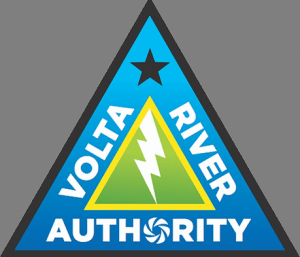VRA says focusing on safeguarding life, saving dams from collapse
 The Volta River Authority says it is focusing on safeguarding life and property as well as supporting the residents in communities affected by the spillage from the Akosombo and Kpong dams.
The Volta River Authority says it is focusing on safeguarding life and property as well as supporting the residents in communities affected by the spillage from the Akosombo and Kpong dams.
Mr Ken Arthur, Deputy Chief Executive Services VRA, said the Authority was concentrating on bringing relief items and making sure that those displaced were at least comfortable.
He said the VRA and local officials in the affected communities were monitoring the situation and would react appropriately in line with the emergency preparedness plan.
“So, at this stage of phase two, we have established what we call the emergency operational centres and these are manned by NADMO officials and they coordinate all the activities that are going on in the various communities and districts. So they give us feedback on all the heavily impacted areas for us to also respond immediately,” he added.
So far, VRA had provided relief items to three districts, that is the Central Tongu, North Tongu and Ada East district.
Mr Arthur said it was difficult to tell specifically when the spillage would stop even though there was anticipation that the levels might drop down to the phase one, which was started since September 15.
However, he said the volumes of water that was coming into the lake right now had imposed on the Authority the obligation to save the dam from collapse and at the same time evacuate people and ensure they were safe.
He said it was normal at this time of the year to experience inflows but the dam this year was getting more than expected and to safeguard it “we have to spill water that is the standard operation for any hydro dam.”
“We will review the situation and see what happens,” he added.
“VRA stores a lot of water during the inflow systems. That is why spilling is also not even a recurring thing that we do. The last time was 2010 and before then it was 1991. So we’ve stored enough water. It goes to a point where it will be above the capacity of the dam so it’s impossible to store any more water,” he said.
Mr Edward Obeng-Kenzo, Deputy Chief Executive Engineering and Operations VRA, said the controlled spillage of water from the Akosombo and Kpong Dams was due to high inflows into the reservoir, resulting in the water level exceeding its upper level.
He said the spillage was to prevent the water from overtopping and compromising the integrity of the Dam.
This is not the first time the VRA is spilling water from the Akosombo Dam. Spillage of water from the dam was done in 1966, 1967, 1968, 1969, 1970, 1971, 1972, 1974, 1991 and more recently, 2010. These were all done to prevent the water from overtopping the Dam.
He said in line with VRA’s Emergency Preparedness Plan and Standard Operating Procedures, formal letters were sent to all the stakeholders (both at the National and District levels, including all communities and people living along the downstream of the Dams) to inform them of the spillage.
“The spillage began at a low rate for about one and a half weeks with no impact on downstream communities. However, the inflow into the reservoir continues to increase at a higher rate, and therefore there was the need to increase the spill rate in order to slow down the rate at which the reservoir elevation was rising. This has resulted in the flooding of some communities downstream of the Dams.”
Before the spill rate was increased, the Volta River Authority (VRA) in collaboration with the National Disaster Management Organization (NADMO), evacuated some of the residents in the affected communities to higher grounds (the designated Safe Haven for those communities) and essential relief items were provided for the affected communities on October 11, 2023.
“The VRA will continue to monitor the inflows into the Akosombo reservoir and make a decision to close the spillway gates to stop the spillage when the situation suggests so,” he added.
He cautioned all residents along the Volta River and downstream of the Akosombo and Kpong Dams to continue to take the necessary precautionary measures to prevent loss of lives.
“The VRA will continue to monitor the situation, work with our key stakeholders, and provide regular updates to ensure prompt response to any emergency that may arise,” Mr Kenzo said.
Source: GNA
